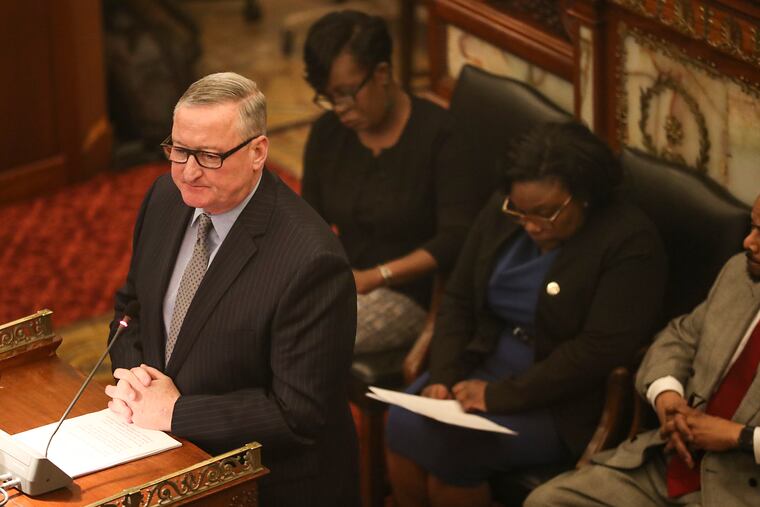The billion-dollar question of Mayor Kenney’s budget | Editorial
The Mayor’s proposed budget gave a few nods to Council’s moonshot, but overall, it’s a plan that makes incremental increases and investments in many different directions.

What’s a bigger leadership challenge for a mayor — a budget surplus or a deficit?
The 2008 recession left then-Mayor Michael Nutter with a $1 billion hole in the budget over the following five years. That forced Nutter to slash programs, do massive layoffs, and propose closing 11 libraries — an action the courts forced him to reverse.
Just over a decade later, Mayor Jim Kenney is overseeing a budget that has grown by nearly $1.2 billion over the last five years. On Thursday, Kenney delivered his fifth budget address and proposed a $5.2 billion spending plan.
Nutter had the tough job of shrinking the budget by a billion dollars over five years. However, overseeing a billion-dollar budget increase poses a challenge as well: Spread the love across city departments, programs, and projects, or make a giant investment in a single issue to effect serious change?
Two days before the budget address, on Tuesday, it seemed as if Kenney was planning to focus. The mayor joined a news conference hosted by City Council to unveil the Poverty Action Plan — a promise to cut poverty by 25% over the next four years. Council President Darrell L. Clarke called poverty alleviation Philadelphia’s “moonshot.”
Going to the moon costs money. A lot.
The mayor’s proposed budget gave a few nods to Council’s moonshot, but overall, it’s a plan that makes incremental increases and investments in many different directions.
Consider one of the mayor’s signature program: PHL pre-K. Kenney is passionate about early childhood education. And yet, he’s proposing only incremental growth in pre-K slots — from 3,300 to a planned 5,500 seats in fiscal year 2023. Meanwhile, New York City, Boston, and Washington are among the cities that offer universal pre-K for all children. When else will the city be able to achieve something this big if we can’t do it when the budget has grown so much?
» READ MORE: What does Philadelphia have to show for an extra $1 billion in spending? | Editorial
There are a lot of good things in Kenney’s budget. One is the Octavius Catto Scholarship program, which, over the next five years, would help 6,500 students attend Community College of Philadelphia by covering tuition that isn’t paid already by state or federal aid and providing a stipend of $1,500 per semester for books, food, and other basic needs. The total cost is $63 million over five years.
Similarly, the mayor proposes $6.6 million next year toward PHL Rent Assist — a rental assistance program that will help low-income individuals. That is in no way close to the levels of new investments that would require lifting 1 in 4 Philadelphians near or below the poverty line. Other investments will be made in violence and policing, the Fire Department, street cleaning, rebuilding parks, diversity, and a new payroll system.
When there is a deficit, a mayor can say that his or her hands are tied. When there is a surplus, everyone has a hand out — and all the work is extremely important. But a part of leadership is prioritization. So far, this budget is on track to make a bunch of problems slightly better. That’s not a bad thing. But it won’t get us to the moon.
» READ MORE: Council’s Poverty Action Plan is a ‘moonshot.’ Philadelphia will need follow-through to achieve it. | Editorial